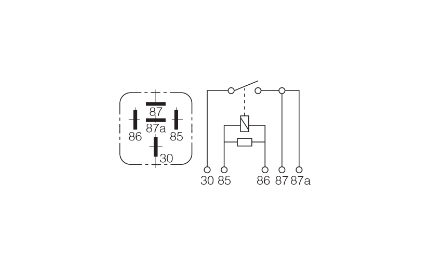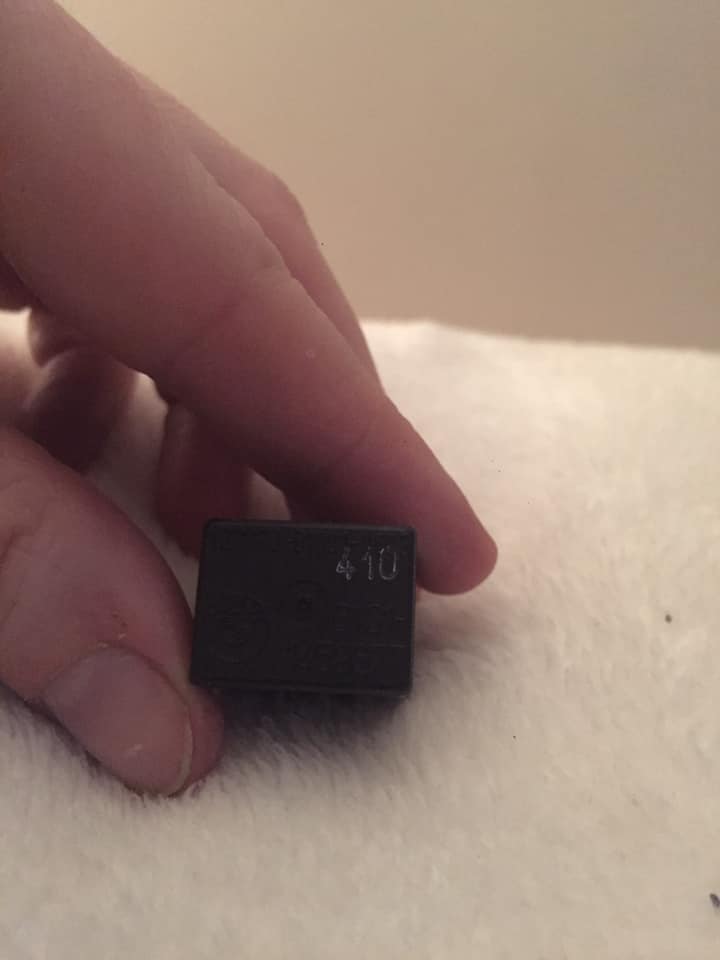1

 Relays, relays, relays - types and substitution Mon Mar 23, 2020 9:35 pm
Relays, relays, relays - types and substitution Mon Mar 23, 2020 9:35 pm
Dai
Life time member

There are two relay pin-out standards in existance; Type A and Type B. Type B is the common type that you buy over the counter almost anywhere. Type A is much rarer and yes, these are the type fitted to the K series. If you upend the relays and look at the pin numbering, this is the way to tell the difference:-
- Type A has pin 85 opposite pin 30
- Type B has pin 85 opposite pin 86
The pins numbered 87-something are the outputs.
- On a four pin relay, pin 87a is connected to pin 30 when power is applied across the coil. Frequently used as a horn relay.
On five-pin relays,
- 87 and 87 are two linked outputs. When the relay coil is not energised, these two pins are still connected together. When the relay coil is energised, continuity is pin 30 - both pins 87.
- 87 and 87a is a changeover relay. When the relay coil is not energised, continuity is pin 30 - pin 87a. When the relay coil is energised, continuity is pin 30 - pin 87.
- 87 and 87b are two independant outputs. When the relay coil is not energised, neither pin is connected to pin 30 or to each other. When the relay coil is energised, continuity is pin 30 - pin 87 and 87b. This is the fuel injection relay type.
Type A relays are getting harder to find and frequently come in at almost twice the price of a Type B relay. A premptive strike against the possibility of a relay failure is to swap terminals 30 and 86 in the relay housing and drop in a set of Type B relays. If you pull a relay and look in the relay housing, there is a small cutout on one side of each terminal. Push a thin blade into that cutout; this will depress the terminal latch and allow you to pull the terminal out of the relay housing. Before pushing it back into its new position, pull the latch back up to an angle of about 20 degrees so that it locks again.
None of this terminal-swapping applies to later models that are fitted with micro-relays. They have a completely different and consistent pinout as they are relatively modern. However, the description of the actions by pin number still apply.
- Type A has pin 85 opposite pin 30
- Type B has pin 85 opposite pin 86
The pins numbered 87-something are the outputs.
- On a four pin relay, pin 87a is connected to pin 30 when power is applied across the coil. Frequently used as a horn relay.
On five-pin relays,
- 87 and 87 are two linked outputs. When the relay coil is not energised, these two pins are still connected together. When the relay coil is energised, continuity is pin 30 - both pins 87.
- 87 and 87a is a changeover relay. When the relay coil is not energised, continuity is pin 30 - pin 87a. When the relay coil is energised, continuity is pin 30 - pin 87.
- 87 and 87b are two independant outputs. When the relay coil is not energised, neither pin is connected to pin 30 or to each other. When the relay coil is energised, continuity is pin 30 - pin 87 and 87b. This is the fuel injection relay type.
Type A relays are getting harder to find and frequently come in at almost twice the price of a Type B relay. A premptive strike against the possibility of a relay failure is to swap terminals 30 and 86 in the relay housing and drop in a set of Type B relays. If you pull a relay and look in the relay housing, there is a small cutout on one side of each terminal. Push a thin blade into that cutout; this will depress the terminal latch and allow you to pull the terminal out of the relay housing. Before pushing it back into its new position, pull the latch back up to an angle of about 20 degrees so that it locks again.
None of this terminal-swapping applies to later models that are fitted with micro-relays. They have a completely different and consistent pinout as they are relatively modern. However, the description of the actions by pin number still apply.
Last edited by Dai on Tue Mar 24, 2020 8:07 pm; edited 2 times in total
__________________________________________________
1983 K100 naked upgraded to K100LT spec after spending time as an RS and an RT
1987 K100RT
Others...
1978 Moto Guzzi 850-T3, 1979 Moto Guzzi 850-T3 California,1993 Moto Guzzi 1100ie California
2020 Royal Enfield Bullet 500















 K1 Black 1993 60K Km
K1 Black 1993 60K Km 
